ZTE Axon 7 Mini Review
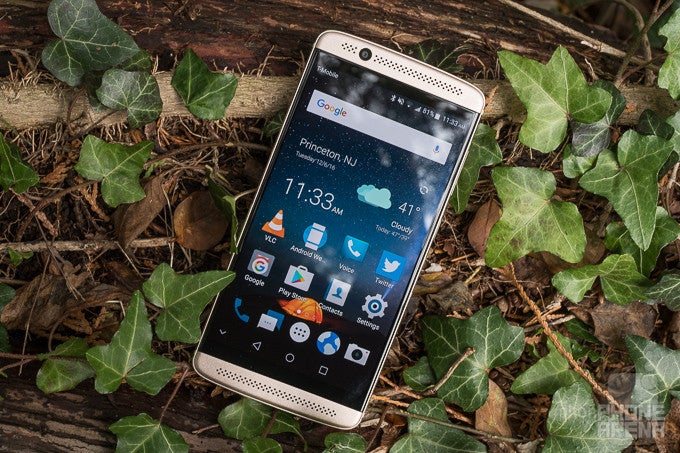
Introduction
Smartphone shoppers love having a nice variety of devices to choose from, so it's little surprise that we see device manufacturers churn out variant after variant of their most popular models. Maybe there's a Plus, Pro, or Max version of a flagship, offering a bigger screen and maybe a few other hardware upgrades, or an Active or Sport edition, beefing up waterproofing and ruggedness.
One of the more popular trends, especially as standard phone sizes have drifted higher and higher, is the availability of pint-sized versions of flagships, whether we call them Compact, Lite, or Mini.
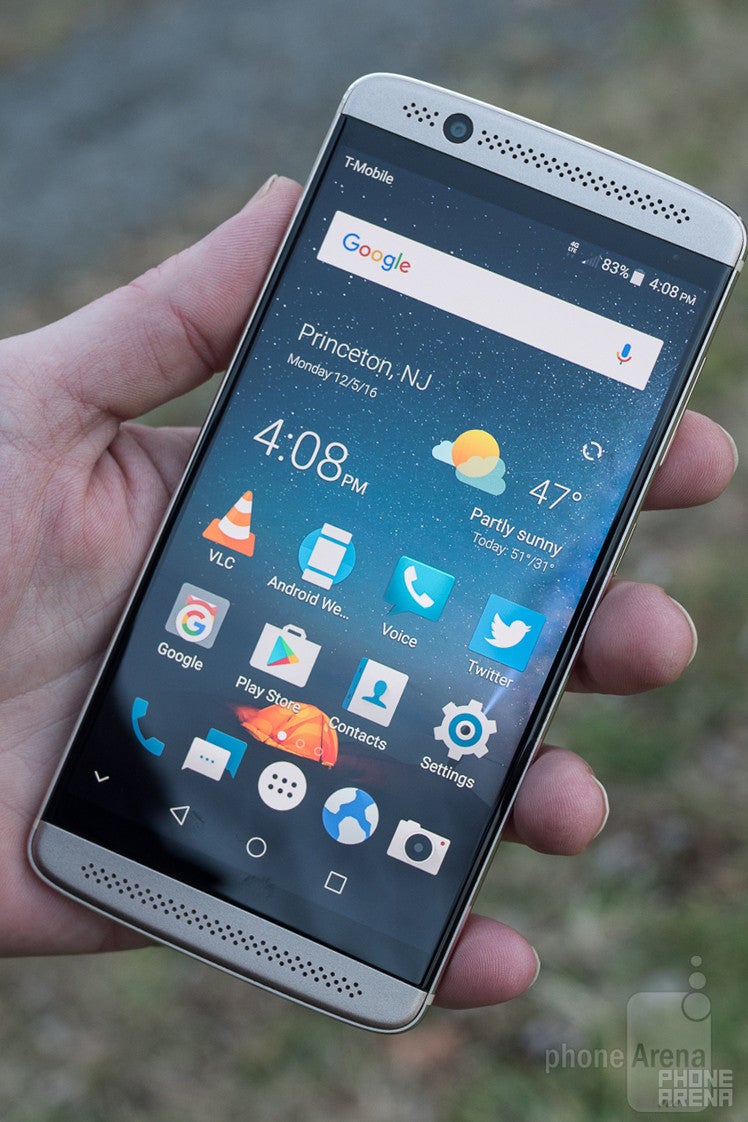
But with a screen size that only shrinks to 5.2 inches, and a body that's barely smaller than its parent phone, does the Axon 7 Mini still manage to scratch that smaller-phone itch? And while the handset costs 25 percent less than the full-sized Axon 7, do downgrades to processing power, camera hardware, and battery capacity ultimately hurt the 7 Mini's appeal? Let's take a look at what this ZTE phone has to offer, and if it manages to strike the right balance between size, features, and price.
In the box:
- ZTE Axon 7 Mini
- Fast charger
- USB standard A (reversible) to USB Type-C cable
- Earbuds
- Quick-start guide
- Axon Passport flyer
- Registration notice
- Clear plastic case
Design
The Axon 7 Mini's biggest success may be the degree to which it reproduces the design of the larger Axon 7
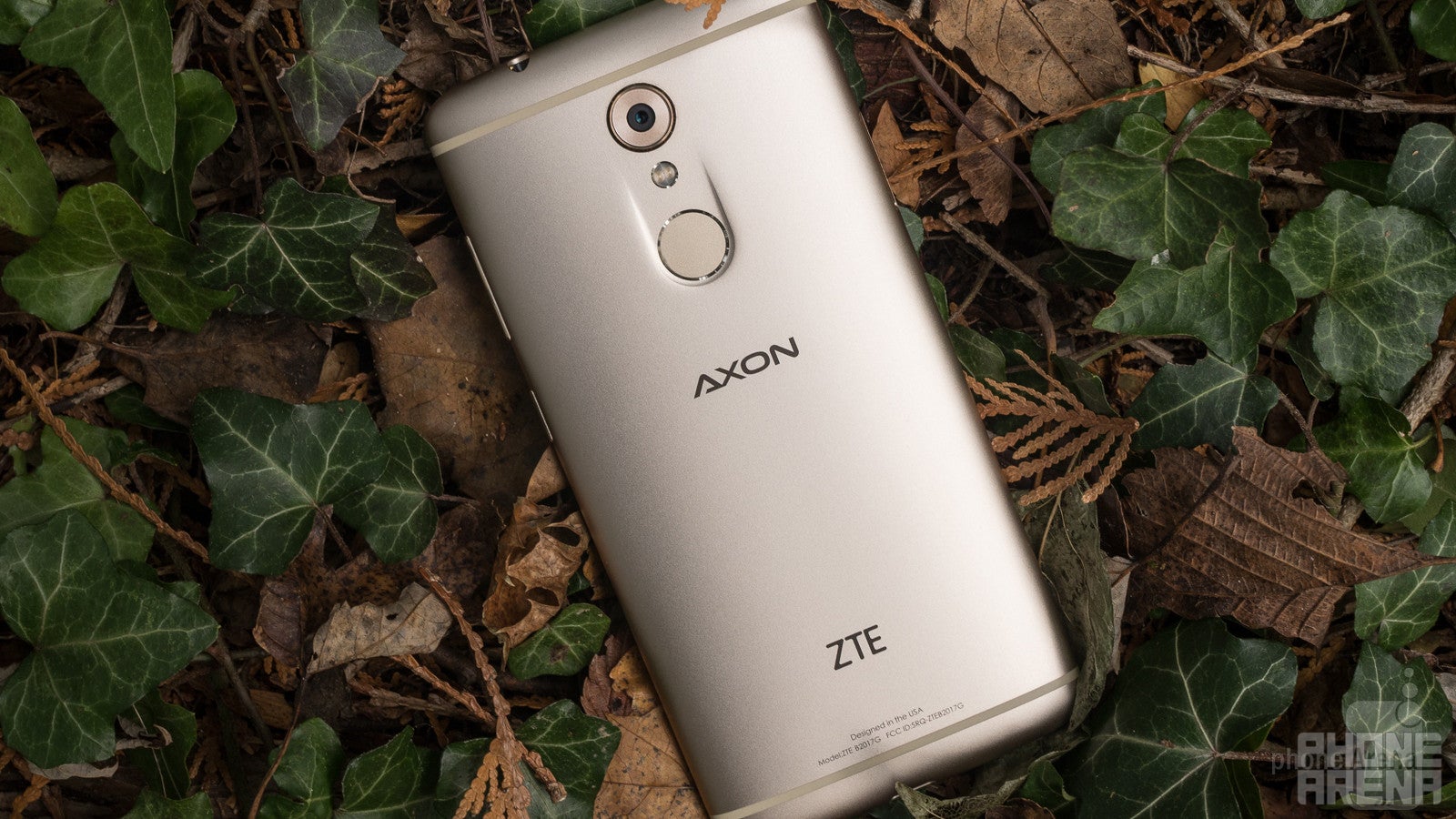
Sometimes a manufacturer tries to come up with a new look for the smaller version of one of its flagship phones, but with the Axon 7 Mini, ZTE resists that temptation; if you've seen the Axon 7 proper, you know quite well what to expect from the Mini, as it follows the same design notes to a T. That means the same sort of smoothly sloping metal body, same rear-fingerprint-scanner orientation, and same prominent front-facing stereo speakers.
While we applaud ZTE for giving us a phone that really does feel like a different version of a larger handset (rather than a wholly new small-screened model), the Axon 7 Mini really doesn't come across as significantly smaller than the Axon 7: it's only three percent shorter, four percent narrower, and precisely as thick as the Axon 7. Maybe the biggest change is in terms of weight, with the Mini coming in thirteen percent lighter – but that's still not a huge difference. Really, this is one Mini model that's going to be defined more by its specs and price than its size.
ZTE gives the handset an analog headphone jack up top, USB Type-C port down below, volume rocker and power buttons on the phone's right side, and its hybrid SIM/microSD tray on the left. On the back we find a camera that has a minor bump, dual LED flash, and the phone's fingerprint scanner.
Display
A great-looking AMOLED panel gives us most of what we want – except brightness to spare
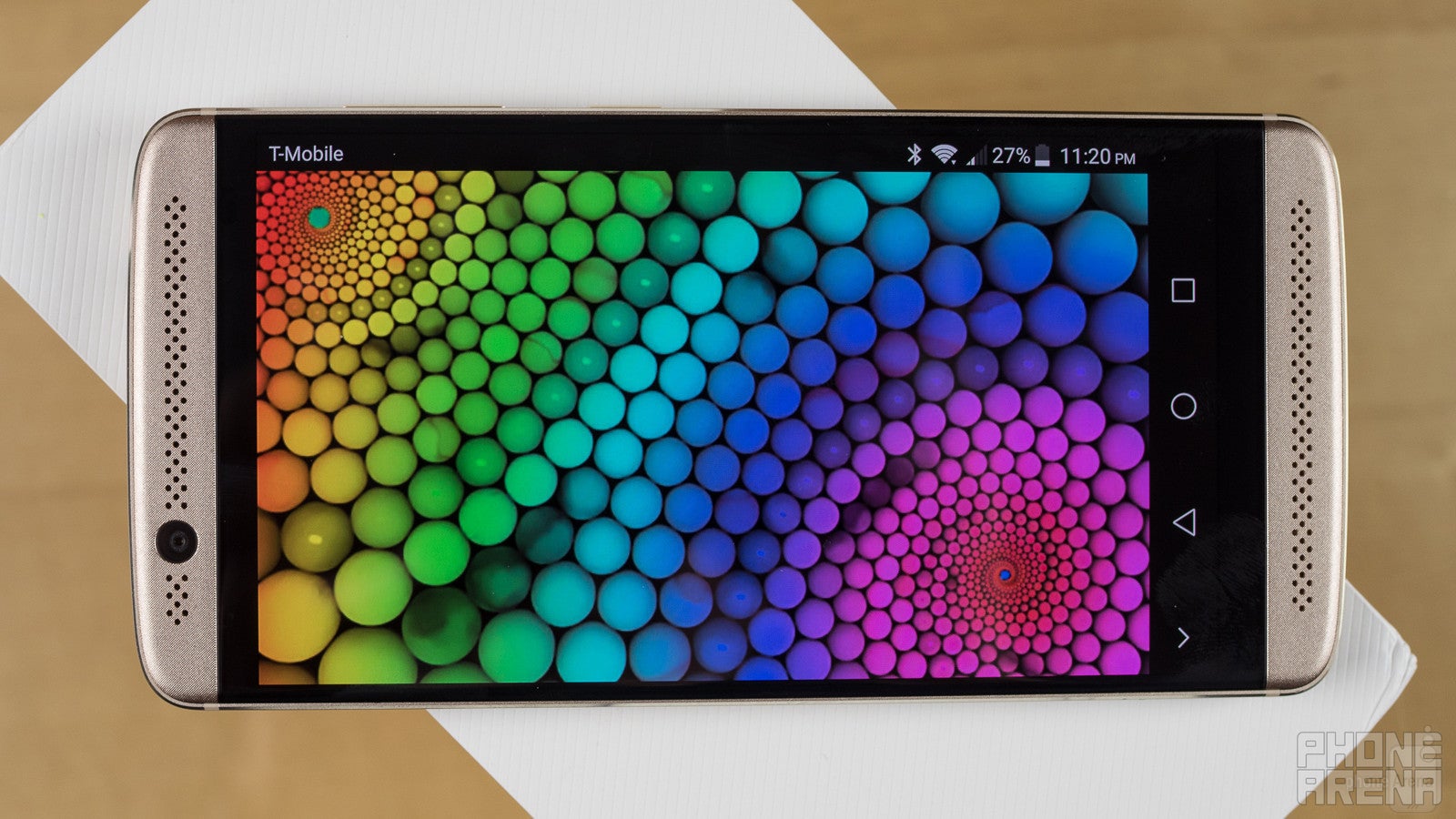
At 5.2 inches in size, the screen on the Axon 7 Mini isn't that much smaller than the Axon 7's 5.5-inch panel; we're looking at about 10 percent less surface area. Like the display on the larger phone, we're dealing with another AMOLED component, though this one at a slightly lower resolution – 1080 x 1920 px to the Axon 7's 1440x2560 px screen. Even though the panel's not that much smaller, things still look pretty sharp, and we're not hurting from the loss of those extra pixels.
The more concerning quality of the Axon 7 Mini's screen is its limited brightness, which our tests identified as among the dimmest screens we've seen all year. Indoors, at least, it looks pretty nice, and by default it offers the sort of over-saturated bold colors for which AMOLED screens are known. If that's not your cup of tea, ZTE provides some easy color-intensity controls, as well as the ability to adjust color temperature.
Interface and Functionality
ZTE would benefit from not trying to fix what isn't broken in Android
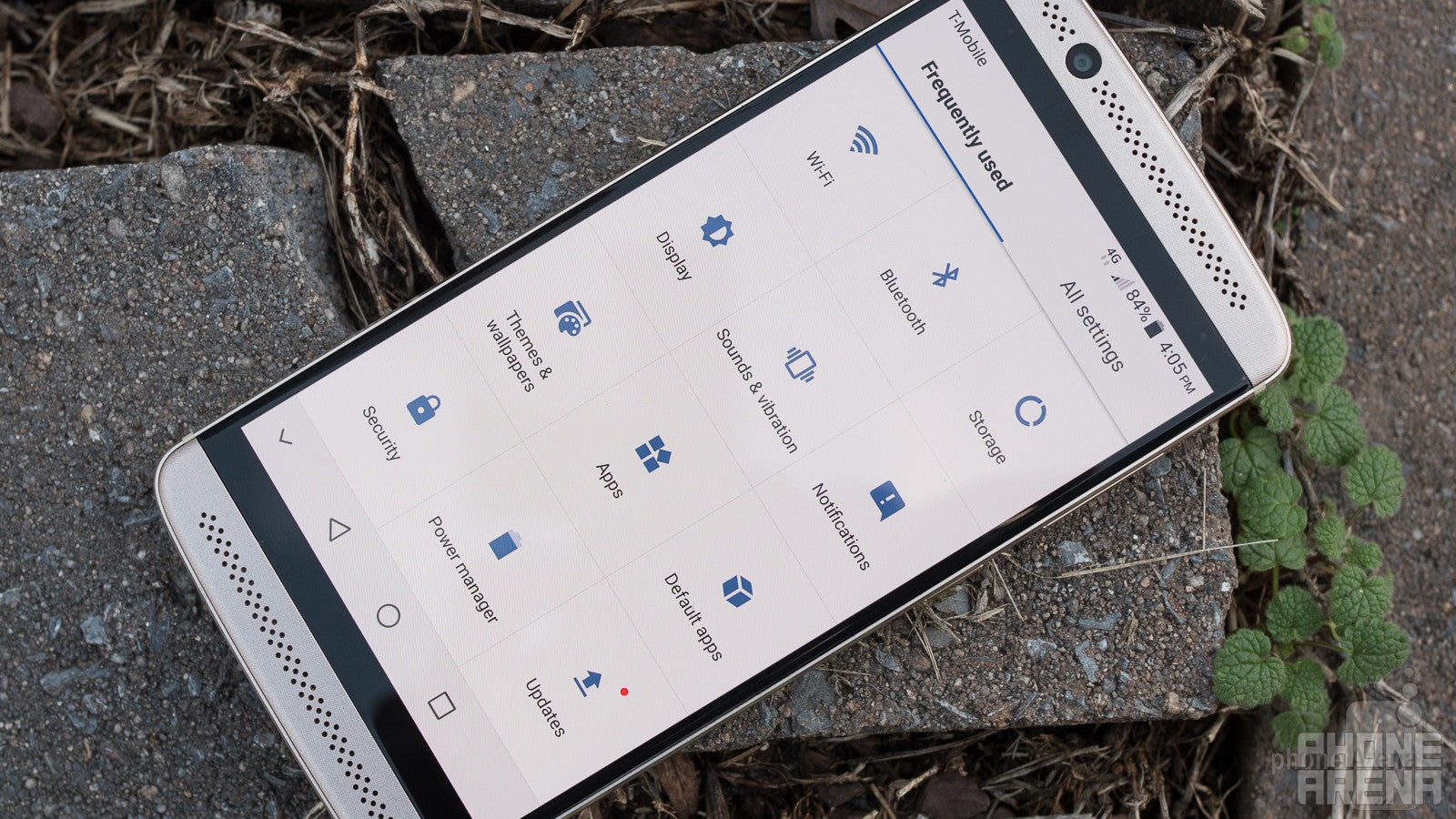
The Axon 7 Mini arrives running Android 6.0.1 Marshmallow with ZTE's MiFavor 4.0 UI on top. As Android skins go, it's on the lighter side, and doesn't drastically change the look and feel of Google's familiar interface. Some of the more obvious changes include a simplified way to access common system settings through a “frequently used” menu that forgoes the cluttered system-settings list for a more streamlined icon view, and a set of on-screen virtual Android buttons with a convenient “hideaway” option to free up screen space.
Other aspects of MiFavor are less interesting, like a not particularly fleshed-out theming engine, and Mi-Pop, a floating button that offers quick access to basic features like taking a screenshot or locking the handset. The latter's an interesting idea, but ends up cluttering the screen and doesn't offer enough functionality to justify its presence.
You'll also find an assortment of gesture controls, with some working better than others. Things like tap-to-wake perform well enough, while others like shake-for-flashlight are limited in their usefulness – here because you first have to manually wake the phone and get to the lockscreen before the gesture will be accepted.
Speaking of lockscreens, while the Axon 7 Mini's is attractive enough, by default it makes the curious decision to hide notifications behind an icon ends up decreasing its convenience. Sure, you can tap to view your notifications, but that's one tap that shouldn't be needed in the first place. Thankfully, you can disable this easily enough, and see your notifications straight away.
It's clear that ZTE tried to add some value to Android with MiFavor, but it just doesn't seem to have been too successful in doing so. Thankfully, nothing's horribly broken, and what doesn't work you can mostly ignore.
Another weak point is the phone's fingerprint scanner. Though the placement is convenient enough, we found the scanner struggling to correctly authenticate us, often taking multiple tries.
Processor and Memory
The Axon 7 Mini shows its hand with specs that pale in comparison to the Axon 7
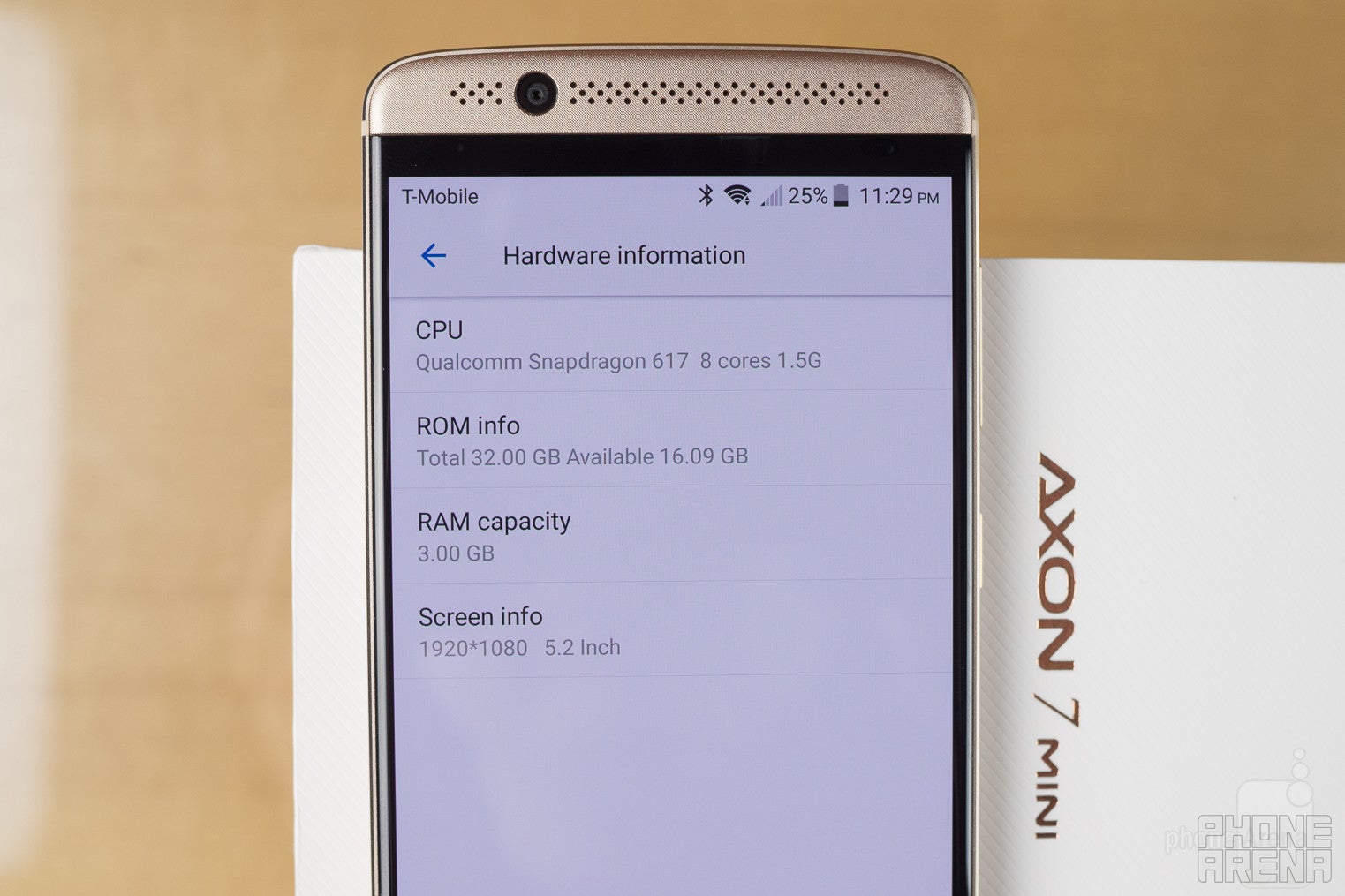
While the Axon 7 ran the flagship-class Snapdragon 820 and got 4 gigs of RAM, for the Axon 7 Mini ZTE dials things back to a Snapdragon 617 and 3GB of memory. The sacrificed RAM doesn't prove to be too problematic, but performance takes a big hit thanks to the lower-powered SoC.
For things like casual social media upkeep and web browsing, the Axon 7 Mini doesn't do too badly at all – and honestly, we were a bit surprised to see our benchmark results come in as low as they did after spending a good amount of time using the phone – but try firing up something a little more demanding (like a graphics-intensive game), and the 617's limitations quickly become apparent. Going with this chip is a decision we understand, helping to keep costs down, but it really emphasizes the fact that this isn't just a smaller Axon 7 – it's also a decidedly less powerful device.
For a budget phone, the 32GB of internal storage is more than adequate, and the ability to expand upon that with a microSD card (at the expense of dual-SIM support) is a nice bonus.
Connectivity
Solid connectivity options don't hurt the Axon 7 Mini, but there's also nothing particularly inspiring here
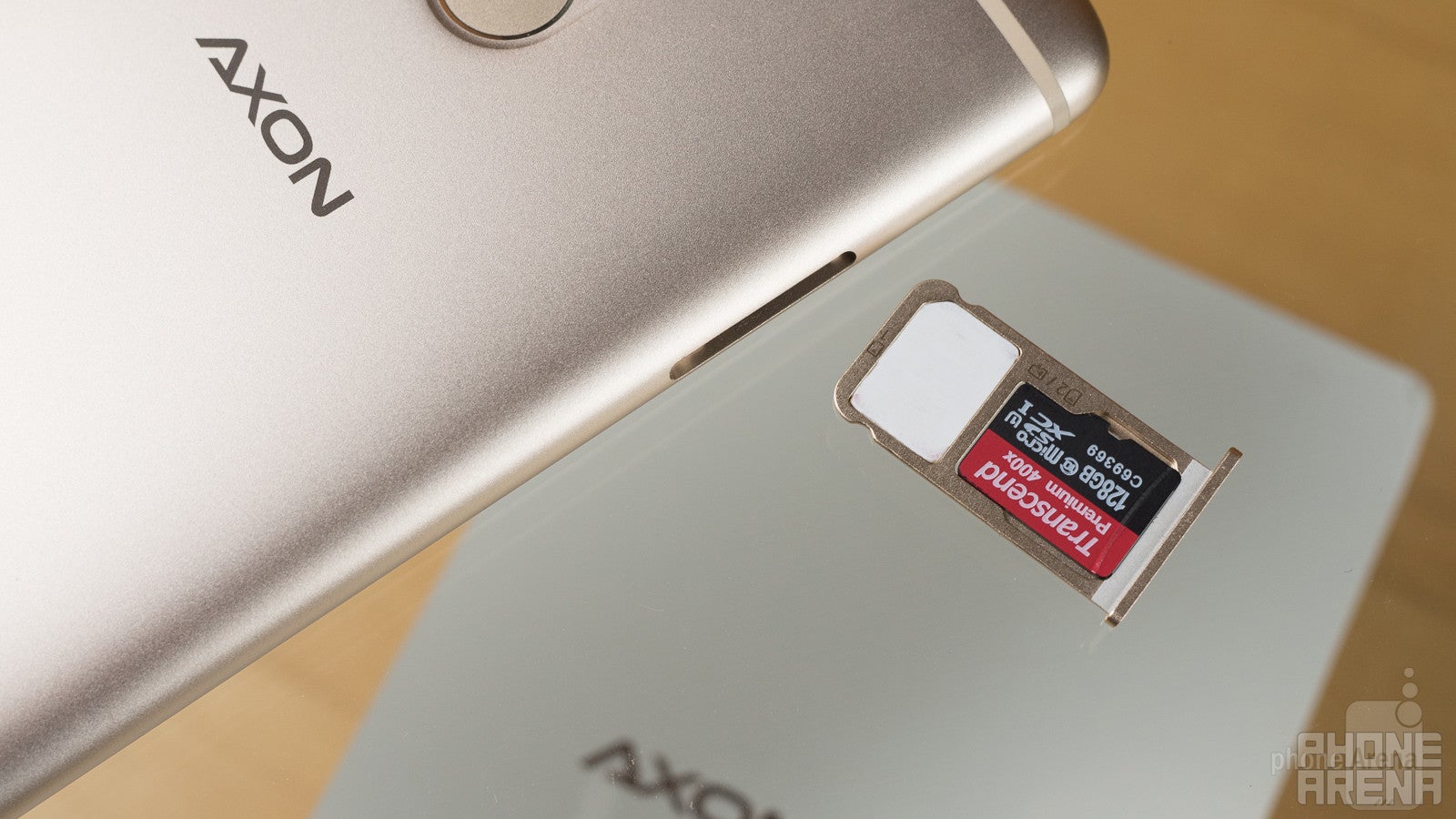
As we just mentioned, the Axon 7 Mini supports dual SIMs so long as you aren't using a microSD card, affording users the ability to jump between two cellular networks – always a nice feature to have, even if we're not taking advantage of the option. LTE Cat6 compatibility affords the phone access to download speeds as high as 300mbps (network dependent, obviously), and the phone supports about a dozen popular LTE bands.
The Axon 7 Mini's wired connectivity all takes place through the phone's USB Type-C port, though it's worth noting that you'll only get compatibility with USB 2.0 speeds – no 3.0 here, like on the Axon 7 itself.
Camera
Feature-rich software and adequate camera hardware somehow add up to less than the sum of their parts
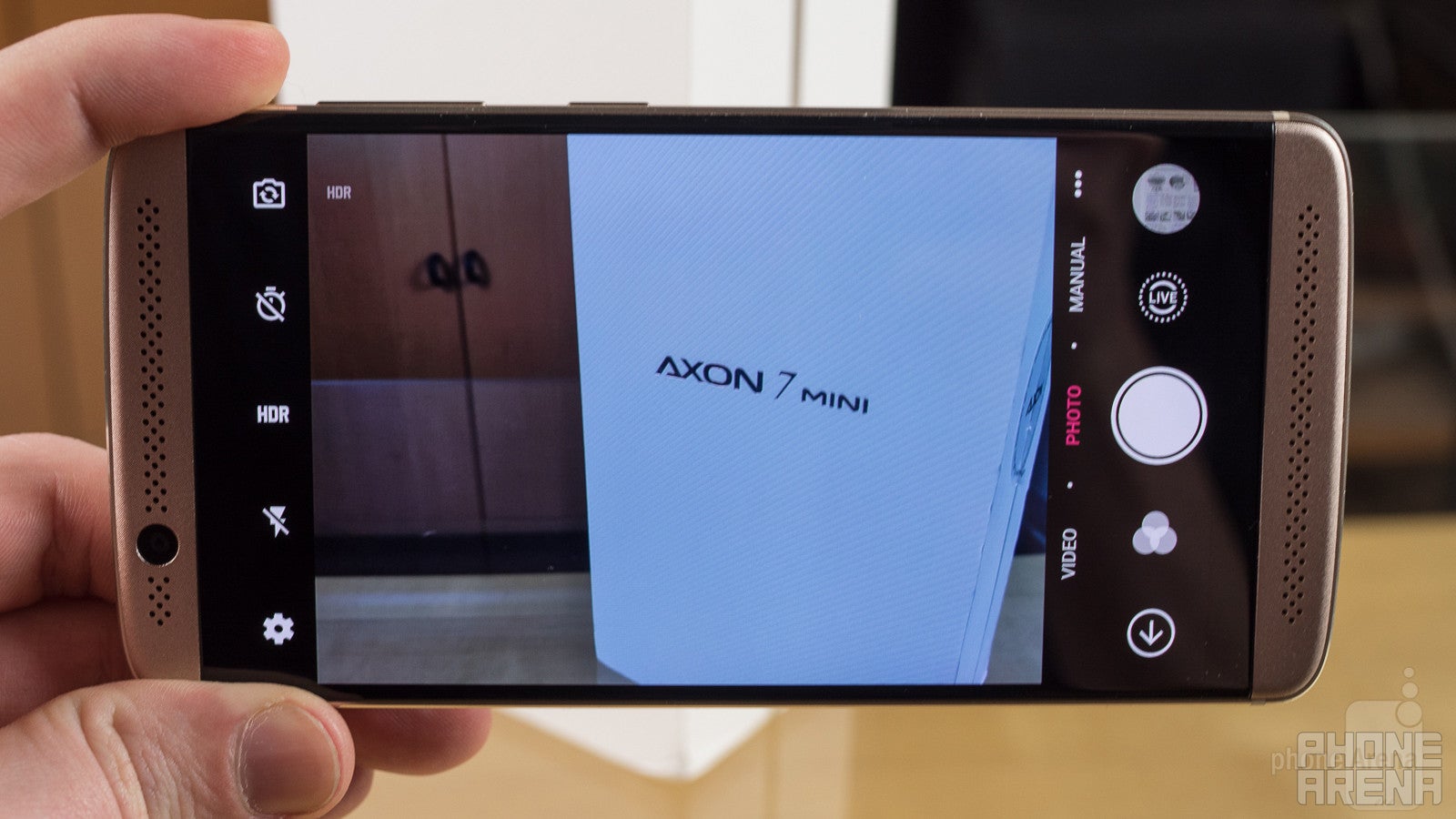
On the surface, the Axon 7 Mini's camera setup sounds pretty solid: we've got a 16MP Samsung ISOCELL sensor protected by sapphire crystal for the phone's main camera, as well as an 8MP front-facer. And while that's good, we miss out on extras that made the 20MP camera on the Axon 7 more appealing, like hardware optical stabilization support.
The camera software is relatively full-featured, including easy icon-based access to common shooting options like HDR and flash settings, as well as a powerful manual mode. And for users wanting something a little extra, still, we find options for shooting modes taking advantage of techniques like multiple exposures and time-lapse imaging. It all looks pretty promising; so how are the results?
Image quality
The Axon 7 Mini's camera is one of those that works really well when you give it ample light and uncomplicated staging, but cracks in the veneer reveal themselves as you venture too far outside that everything's-set-up-perfectly domain.
Among the issues we found the camera struggling with were complicated focus situations (with both close-up and distant elements), as well as scenes without straightforward exposures, like shooting against an overcast sky. With the latter, we expected to see the auto-HDR mode compensate for a washed-out background, but the results proved far less satisfying than what we'd get with the HDR on a phone like the Google Pixel.
Don't push things too far, though, and you should be happy. Or if you need to get a tricky shot, try your hand with the camera's manual mode, rather than over-relying on auto point-and-shoot action.
Video recording
Video resolution tops out at 1080p (no 4K here), but whether you're shooting in 1080p, 720p, or a lesser resolution, footage never looks particularly sharp. Re-focus times are a little slow, and with a pronounced “seeking” action, but even when the camera settles in on a focal lock, the imagery isn't as crisp as we'd like it to be.
Combined with a lack of any sort of stabilization feature, and mics that really caught a lot of wind noise in our tests, and we just weren't too impressed with the Axon 7 Mini's video performance. If you just need to capture a moment for posterity, it's adequate enough, but you can also do a lot better in terms of smartphone video capture.
Multimedia
Never underestimate how good front-facing speakers can sound
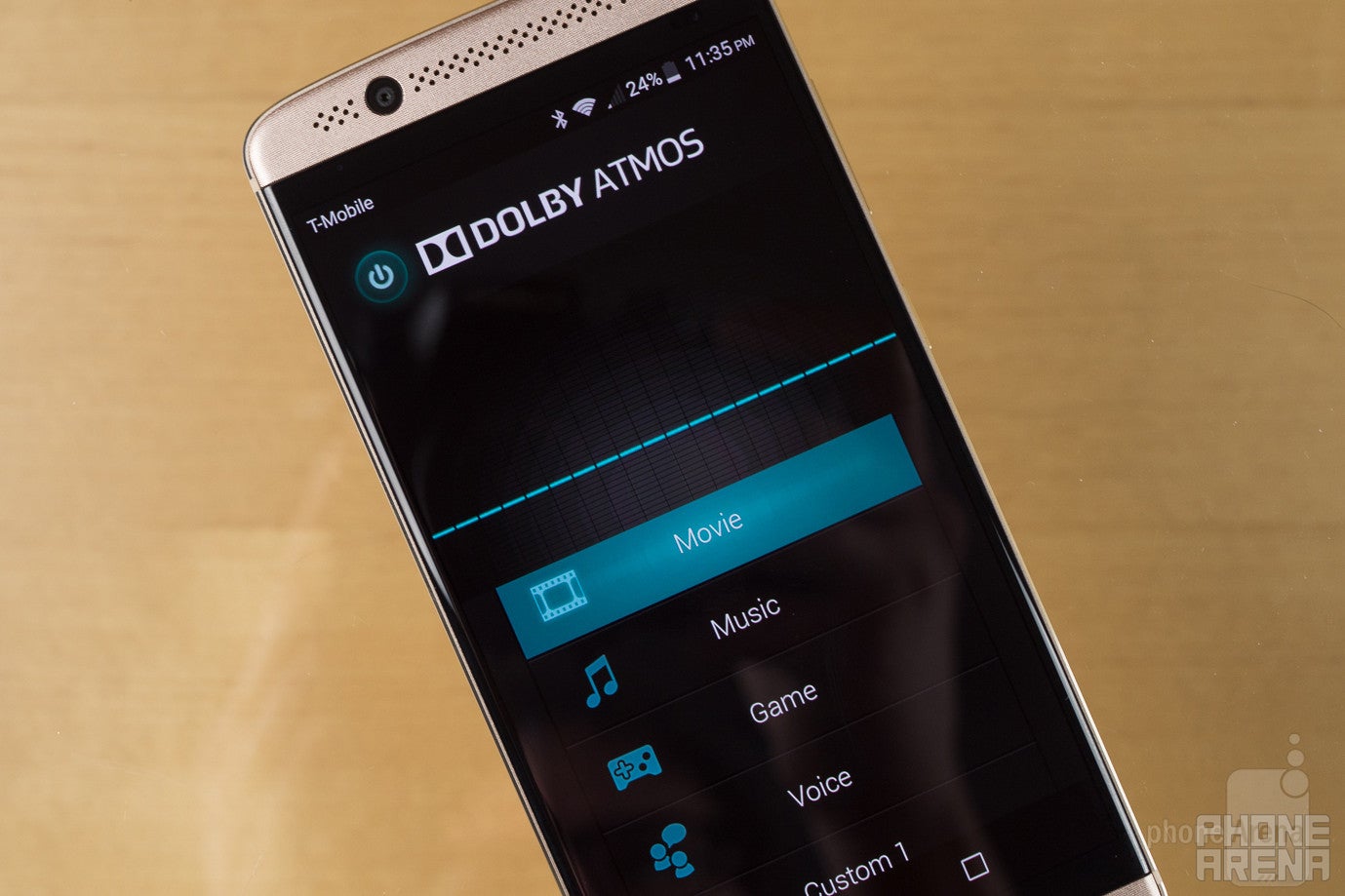
While some of the Axon 7 Mini's performance might not sound too impressive so far, the phone really shines when it comes to multimedia. Beyond the bold colors of its AMOLED screen making video look great, the pair of front-facing stereo speakers really enhance the audio you're enjoying. They sound great on their own, but the software Dolby Atmos tweaks add an extra layer on top of that, augmenting sound quality and expanding the stereo effect – though you're free to flip that off if you'd rather stick to a more natural sound.
ZTE's included pair of earbuds sound surprisingly good, and like the speakers and their Atmos mode, the earbuds support their own “Headset HiFi” processing. Engaging that mode produces some noticeably richer-sounding audio, though ZTE does warn that using the feature will take a toll on the phone's battery life.
Call Quality
Voice calls sound OK on the ZTE Axon 7 Mini, though we did find a bit of a persistent low-level digital noise signal in the background. It's nothing worse than plenty of other phones, but may prove to be an issue for users particularly concerned with call fidelity.
A recent update that arrived while we were testing the Axon 7 Mini added support for VoLTE calls, though we were unable to put this mode through a proper test – though the potential is there for improved call sound quality.
Battery Life
Even without lots of power-hungry hardware, battery life comes up on the short side
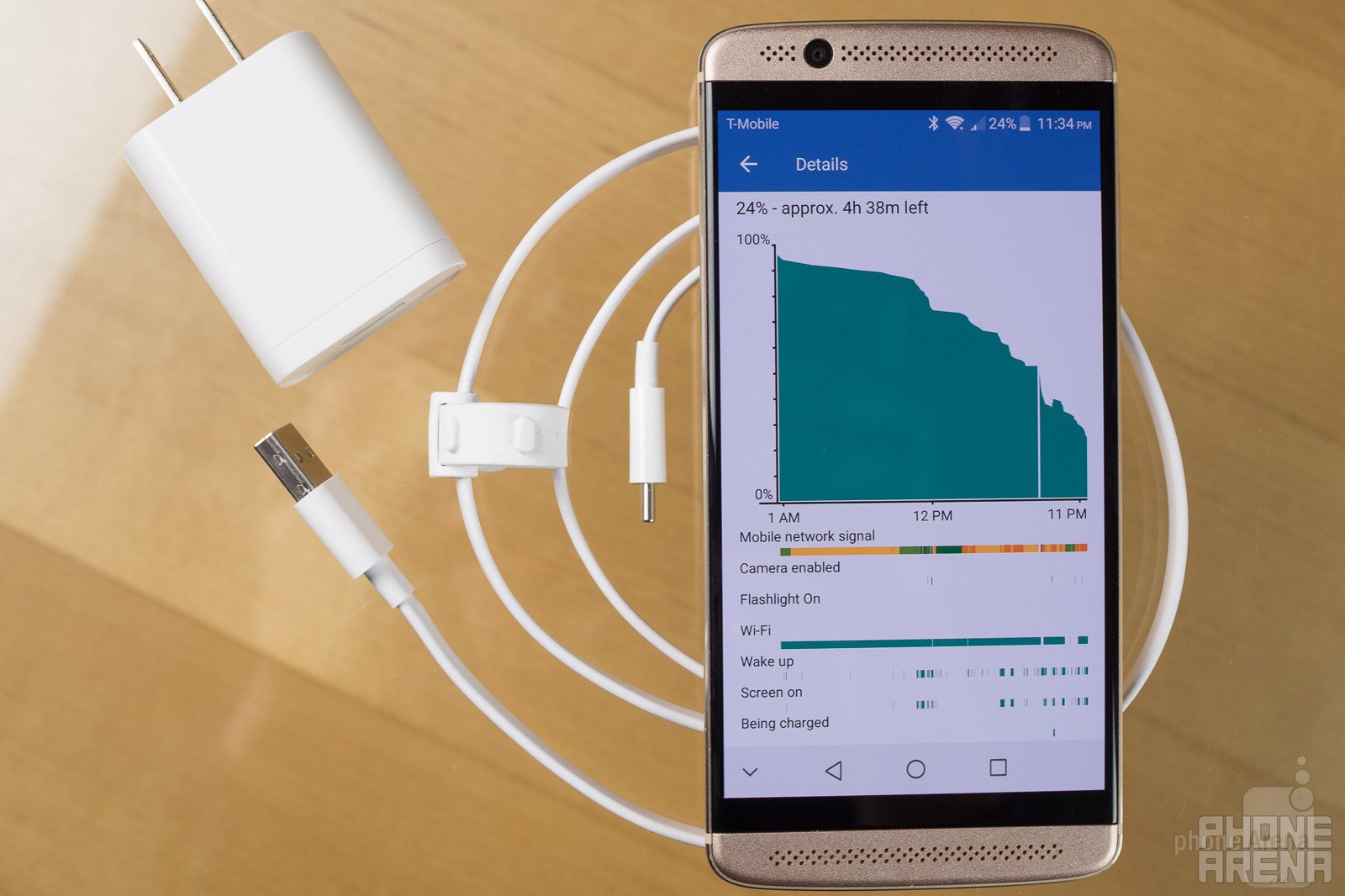
The Axon 7 Mini packs a 2,705mAh non-removable battery – that's about 17 percent smaller than the Axon 7's. In our tests, that afforded us just over six hours of screen-on time with the phone in regular use. That's not tragic, but it is solidly on the lower side of what we from modern handsets, and is especially disappointing in light of the presence of the relatively power-efficient Snapdragon 617 chip – though something like a 625 would likely have done even better.
While using the phone, we often found ourselves topping-off the charge mid-way through the day, lest we risk pushing too low as the evening stretched on.
Recharge times are nice and speedy, with Quick Charge 3.0 support, and the including charging cable is a neat little addition: its USB Type-C end is reversible, just like you'd expect, but so is the standard A end, thanks to a little flexible flap with the plug's contacts. Getting it plugged in can take a little wiggling, but it's a small touch that we appreciate, all the same.
Conclusion
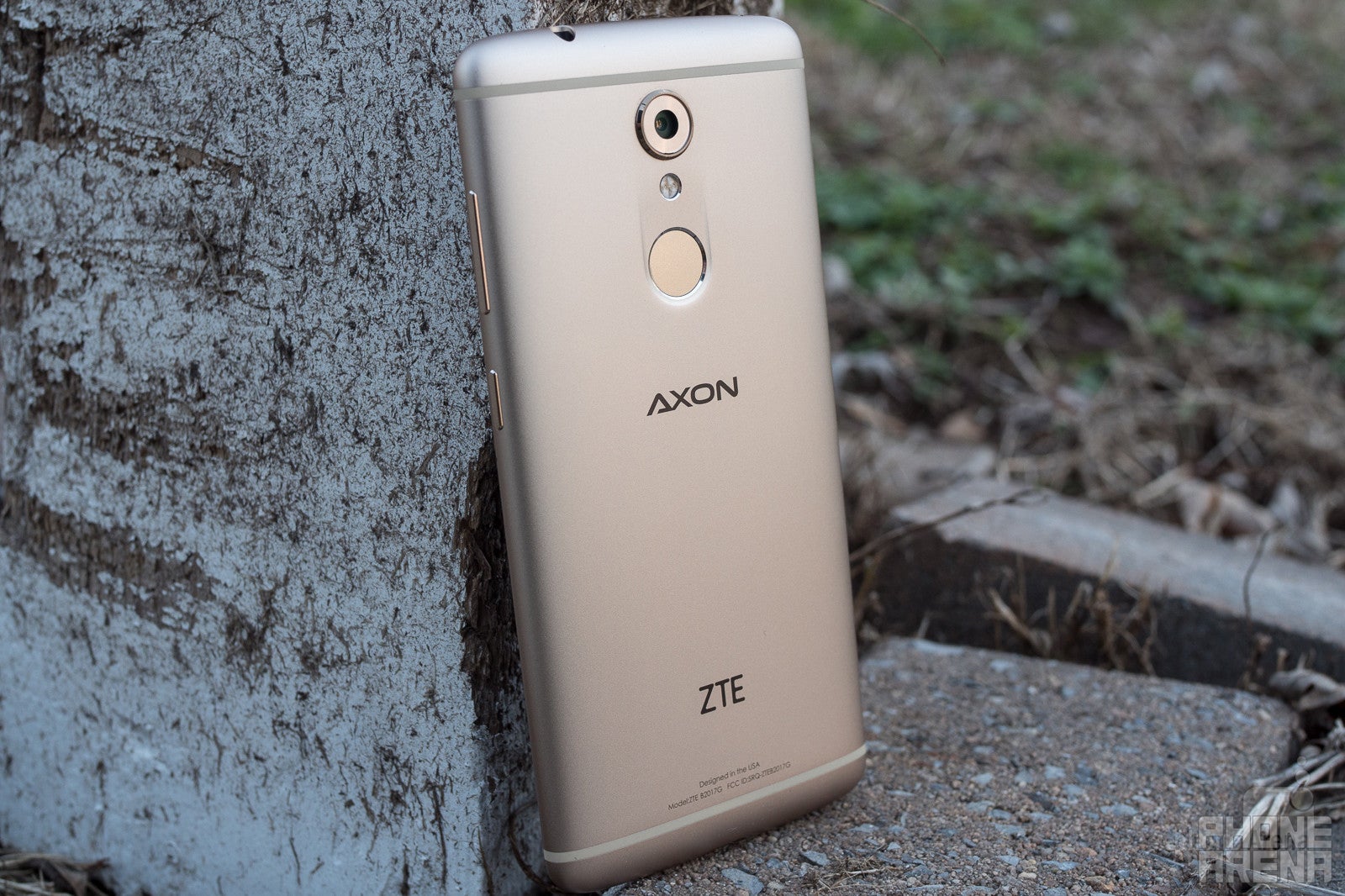
The Axon 7 Mini falls short of being the platonic ideal of a “mini” phone, one that takes a flagship, features intact, and gives us a handset with a smaller screen. Instead, it practically turns that approach on its head, barely decreasing size at all, and instead bringing us a phone that might be better called the Axon 7 Lite, dialing back on processing power and bells and whistles.
But that doesn't make the Axon 7 Mini a bad phone by any stretch, either. The phone really shines when it comes to audio performance, and if you're watching a lot of video or listening to plenty of music, you're likely to have a great time with the Axon 7 Mini – so long as you don't plan on watching many of those videos outside on bright, sunny days.
Really, pricing is going to make or break the Axon 7 Mini – it's clearly a phone that makes a number of sacrifices, and we'd like to think that we're saving a nice chunk of change through those compromises.
The problem there is that the phone costs $300 to the Axon 7's $400. Maybe that $100 difference means the world to you, but we're awfully tempted to pay the extra cash for the faster phone with more storage, a bigger, higher-res screen, and fancier camera hardware.
But there's a twist, in that discounts are already arriving for the Axon 7 Mini – like how Best Buy just started selling the phone for $250. At that price, it's quite a bit more attractive, and it really does feel like a phone that should demand a higher price tag. Keep your expectations in check, and you could be pretty happy with the Axon 7 Mini.

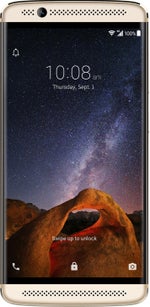
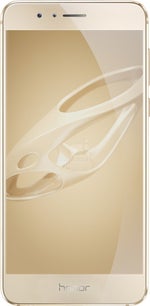
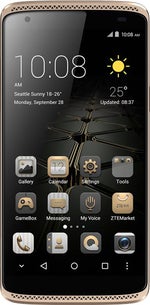
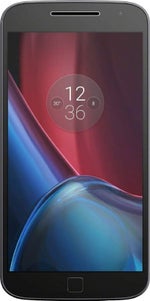




























Things that are NOT allowed: